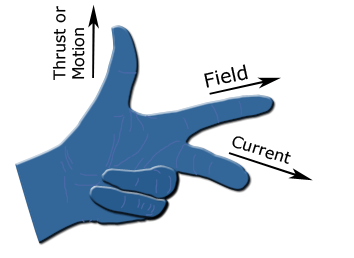Fleming Left Hand Rule is used when a current-carrying conductor is placed in an external magnetic field wherein it experiences a force perpendicular to both the magnetic field and the direction of the current flow.
Index
History
Originally, this rule was developed by an English electrical engineer, John Ambrose Fleming, in the late 19th century.
The left-hand rule uses the Thumb, the index finger, and the middle finger of the left hand.
Statement & Definition

Fleming left hand rule definition can be stated as:
A left hand is stretched such that the Thumb, middle finger, and index finger make an angle of 90 degrees to each other. Then,
Thumb represents the direction of Force(F).
The Middle finger represents the direction of Current(I).
The Index finger represents the direction of the Magnetic field(B).
If we are given any two of these, then we can find the direction third.
Related: Fleming Right Hand Rule
Applications
Fleming left hand rule is used for the determination of the direction of the electron or proton when the magnetic field is applied to it.
It is mainly used in the working of electrical motors.
FAQs
A left hand is stretched such that the thumb, middle finger, and index finger make an angle of 90 degrees to each other.
Then, the thumb shows the direction of Force, the Middle finger indicates the direction of the current, and the index finger shows the direction of the magnetic field.
John Ambrose Fleming founded the left and right-hand thumb rules in the late 19th century.
The Left-Hand Rule applies to electric motors, while the Right-Hand Rule applies to generators.
